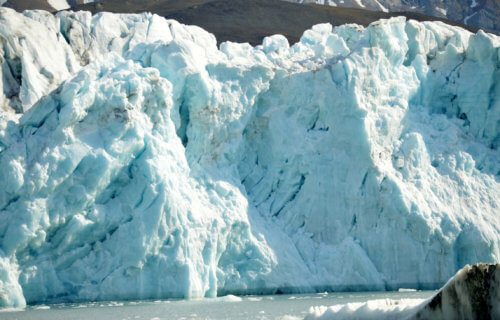PITTSBURGH — Half of Earth’s mountain glaciers are doomed to melt by the end of the century, according to new projections.
Researchers from Carnegie Mellon University say the world is greatly underestimating the threat melting glaciers pose to the planet as global warming continues. Even under the most optimistic scenarios, glaciers globally will lose substantially more mass and contribute to more sea level rise than current predictions.
These projections include those published in the most recent IPCC (Intergovernmental Panel on Climate Change) report.
“Every increase in temperature has significant consequences with respect to glacier contribution to sea level rise, the loss of glaciers around the world, and changes to hydrology, ecology, and natural hazards,” says lead author Dr. David Rounce in a statement.
There are more than 215,000 glaciers in the world, excluding the Greenland and Antarctic ice sheets. They cover 450,000 square miles. If they all melted, they would raise sea levels by about 16 inches.
Rates of glacier melt have increased over the past few decades. The continued decline of these vulnerable features will also affect freshwater availability for nearly two billion people and increase risk from glacier-related hazards.

What will the world look like in 2100?
Projecting glacier loss is critical to future global climate adaptation and mitigation efforts. Existing calculations are limited to regional scales and neglect key physical processes controlling glacier mass loss.
So, Dr. Rounce and his colleagues took advantage of new datasets that explicitly account for glacier dynamics. In their new study, they produced projections for all of Earth’s individual glaciers under +1.5°Celsius (C), +2°C, +3°C, and +4°C temperature change scenarios by 2100, relative to pre-industrial levels.
The findings suggest glaciers will lose 26 to 41 percent of their total mass by 2100, relative to 2015. This is under temperature increases of 1.5°C to 4°C, respectively, compared to pre-industrial levels.
This means that even under the best-case scenarios, where global temperatures only rise by 1.5°C, as many as half of the planet’s glaciers will disappear by 2100. Recent climate pledges from COP-26 project an increase of 2.7°C over the next century.
“Earth will likely experience a near-complete deglaciation of entire mid-latitude regions, including Central Europe, Western Canada and United States, and New Zealand,” Dr. Rounce reports. “This will result in a much greater glacial contribution to sea-level rise than currently estimated.”
Scientists say it’s too late to avoid losing glaciers
The study, published in the journal Science, represents “a substantial step forward in predictive modeling”, according to the team. Melting glaciers contribute to rising sea levels, but almost three-quarters of this water comes from Greenland and Antarctica.
The Hindu Kush Himalayas, Patagonia, and Iceland are also significant. The European Alps, which run through France, Switzerland, Italy, Austria, and Germany, contribute less than one percent. Cutting the emissions from fossil fuel burning, deforestation, and other polluting activities is the biggest factor in minimizing the melting of the ice.
Professor Gudfinna Adalgeirsdottir from the University of Iceland, who did not take part in the study, described the new findings as a “stark warning about the consequences of insufficient action.”
“Although it is too late to avoid losing many glaciers, any effort to limit global mean temperature rise will have a direct effect on reducing how many glaciers will be lost.”
South West News Service writer Mark Waghorn contributed to this report.

